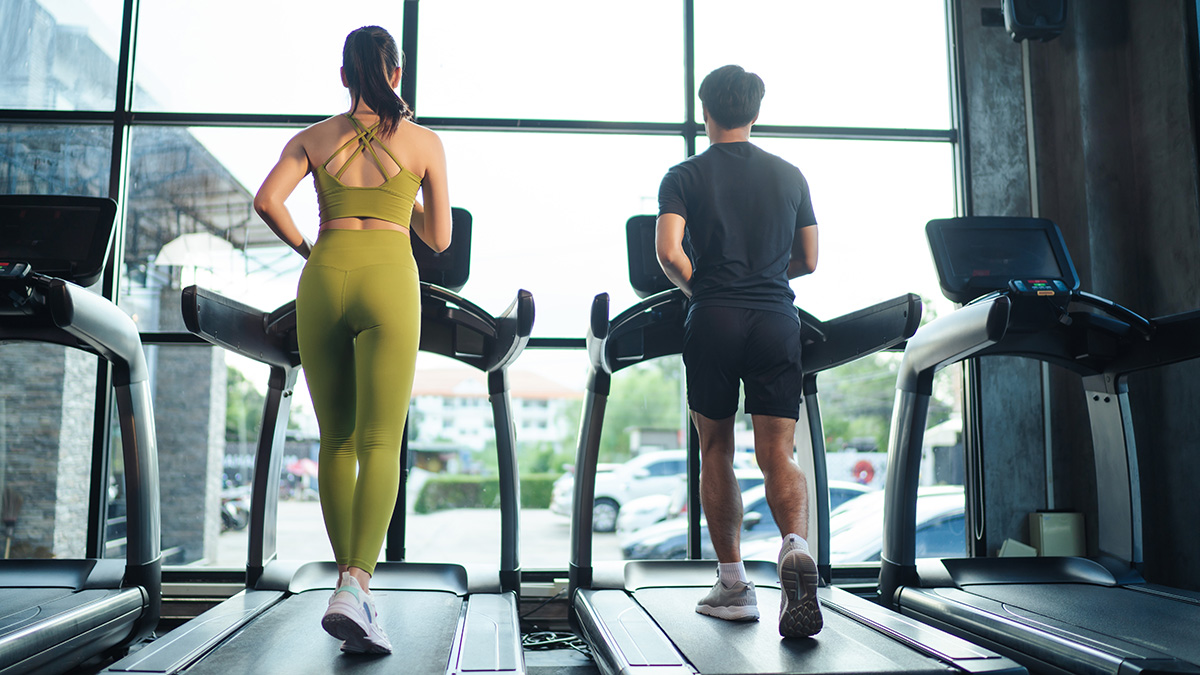4 Fitness Trends on TikTok That Are Actually Worth Trying

There’s no shortage of fitness advice on TikTok. Pull up the app and it won’t take long to stumble upon an influencer demonstrating the perfect barbell hold or boasting about their incredible results from an intense two-week challenge.
But for every sound fitness tip shared by a qualified personal trainer, there are countless more myths, unfounded claims, and downright bad advice circulating on the platform.
To save you time and energy, we’ve sifted through the most popular health and fitness content on TikTok to uncover a handful of #FitTok trends that are genuinely worth your interest. Here’s what to add to your workout routine…
Dead Hangs
In recent months, thousands of fitness enthusiasts have been sharing videos of themselves performing ‘dead hangs,’ showcasing the satisfying back relief benefits the exercise offers. With over 138 million views on the app, this simple bodyweight move has achieved certified viral status among gym goers.
For the uninitiated, dead hangs are exactly what they sound like: you hang from a sturdy horizontal bar with your body fully relaxed and arms extended, allowing your body weight to create a gentle traction effect on your spine and shoulders. While it might appear deceptively simple, this exercise can work wonders for your overall strength, posture, and shoulder health.
Whether you commute to an office or you work at your kitchen table, many of us spend most of the day hunched over screens, with our shoulders fixed in a rounded and tense position. Physiotherapists say that dead hangs can help to gently decompress the shoulder joints and stretch the surrounding muscles. As we hang, the weight of our lower body gently pulls the spine, elongating it and countering the effects of slouching.
If you’d like to incorporate dead hangs into your fitness routine, find a sturdy horizontal bar or use the pull-up bar at your gym. We recommend starting with shorter hang times, around 20-30 seconds, and gradually working your way up to longer durations as your strength improves.

Reformer pilates
Reformer Pilates has been doing the rounds on TikTok recently, thanks to rumours that Harry Styles is a fan. This trendy exercise method is a variation of classic Pilates that utilises a specialised machine known as a reformer, which utilises a sliding carriage, adjustable springs, straps, and a padded platform. Together, these components, combined with a range of exercises, offer a comprehensive full-body workout.
A common misconception is that Pilates only involves breathing and stretching. However, Reformer Pilates, while not centered around lifting heavy weights, has the surprising ability to build explosive strength. By engaging and toning muscles against the resistance provided by the springs, it promotes lean muscle development. As it’s low-impact, it also minimises the risk of injury while delivering these body-sculpting results.
If you’re considering trying Reformer Pilates for the first time, it’s a good idea to book a private session or join a beginner group session led by a certified Reformer Pilates instructor. They’ll introduce you to the principles, guide you through the movements, and provide cues for correct technique.

12-3-30 workout
Unless you’ve been living under a rock, you’ve probably heard of the 12-3-30 workout. This treadmill-based exercise routine, created by TikTok influencer Lauren Giraldo, has taken social media by storm. The numbers ‘12-3-30’ might initially sound confusing, but they simply relate to walking on a treadmill for 30 minutes, to an incline of 12 percent, and a speed of three miles per hour.
What makes the 12-3-30 workout so appealing is its accessibility – anyone can do it, and you don’t need fancy gym equipment, just a trusty treadmill. As incline walking is a type of LISS activity (Low-Intensity Steady State training), it doesn’t put undue pressure on your joints, which can be a major concern if you’re returning from injury.
With age, you also naturally lose bone density and are at higher risk of osteoporosis too, so a gentle training method like 12-3-30 is a good way to strengthen muscles and bones without overloading the joints. Plus, it’s also an excellent form of low-impact cardiovascular exercise, helping to improve balance, stamina, and lower body strength over time.
Shy Girl Workouts
Working out in public can sometimes feel uncomfortable and awkward. That’s where ‘shy girl workouts’ come into play. These no-fuss exercise routines require minimal equipment, take up little space, and won’t draw unwanted attention.
Shy girl workouts consist of exercises you can perform either at home or in a discreet corner of the gym, helping you to build confidence with exercise over time. The trend has gained growing traction on TikTok in recent months, with over 200 million views under the hashtag #ShyGirlWorkout.
Given that ‘gymtimidation’ remains a big part of workout culture, it’s little surprise that shy girl workouts have taken off. The term describes feelings of anxiety, self-consciousness, and fear in public exercise spaces, and many people find it a big barrier to working out. This is especially relevant for women who might feel vulnerable in male-dominated gym areas, such as the weights room. While these spaces should be available to everyone, ‘Shy girl workouts’ provide a solution for anyone that’s feeling nervous about working out in a crowded place.
Online, there are plenty of tagged videos that offer helpful tips. These videos typically advise you to ‘locate a peaceful spot,’ pop in your headphones, and grab a pair of dumbbells. To prevent those uncomfortable pauses between sets, creators often recommend adding some light stretches or mobility exercises into your routine. This way, you stay focused on your workout and don’t have time to feel out of place.


















